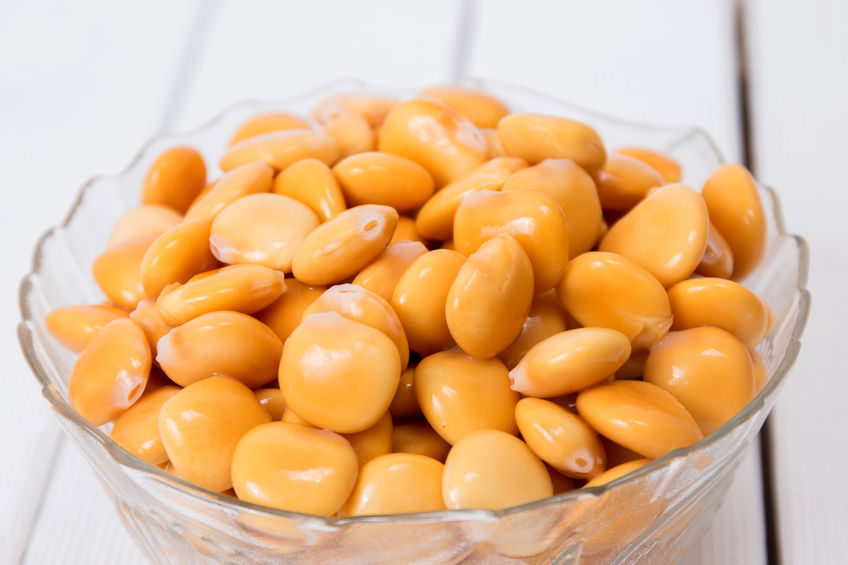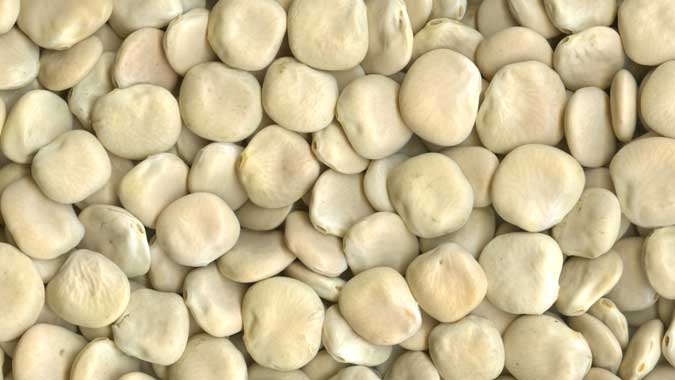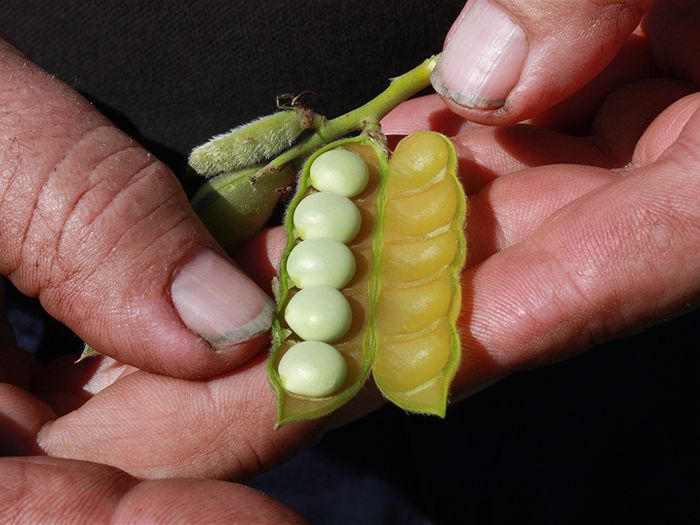
Dr William Stiles from the Institute of Biological, Environmental and Rural Sciences (IBERS) at Aberystwyth University, writes about an alternative source of protein for animal feed - lupins.
Lupins are a genus of flowering plant in the legume family (Fabaceae) perhaps most famous as an ornamental favourite of gardens, where their large, colourful flowers make them popular with horticulturalists.
However, there are over 150 different species of lupins some of which are ideally suited to agricultural production in the UK, due to their nature as nitrogen fixing grain legumes that develop seeds with high protein and high energy contents, which can be grown effectively in northern climates. There are three lupin species of agricultural significance in the UK at present: narrow-leafed (L. angustifolius), white (L. albus) and yellow (L. luteus).
These plants have been of interest as a potential crop since the early part of the last century. In 1928, the presence of low-alkaloid mutants of lupin species were discovered, which led to the breeding of alkaloid free or sweet varieties of lupins. This provided new possibilities for this crop as a livestock feed.
Subsequent progress made through research with regard to breeding, production and utilisation of lupins, has begun to realise their potential as high protein, leguminous crops that can be cultivated successfully and could meet demands for home-grown protein for sustainable livestock production in the UK.
As leguminous plants, lupins have the ability to fix and utilise atmospheric nitrogen which means additional inputs of nitrogen fertiliser will not be required, offering both economic and environmental advantages.

Leguminous species have symbiotic relationships with Rhizobium bacteria, which convert inert nitrogen (N2) into biologically useful ammonia (NH3), supplying the plant with Picture courtesy of the LUKAA project KE Hub - Driving innovation by connecting research to practice useable nitrogen.
In addition, this plant characteristic can improve soil nitrogen content and availability, reducing the requirement for fertiliser input in crops that follow lupins in rotational systems.
In comparison to crops such as peas or beans, lupin grain contains relatively high protein (up to 42%) and oil contents, with comparatively large amounts of Digestible Undegraded Protein (DUP) in relation to their Effective Rumen Degradable Protein (ERDP).
In the case of DUP, which is considered highly valuable in terms of livestock production, lupin grain content can be as much as double alternative crops such as peas. Growing lupins for animal feed may therefore offer a realistic alternative to imported soya as a UK-grown vegetable protein source.
The LUKAA project (Lupins in UK Agriculture and Aquaculture) was a joint initiative between partners: Alltech, Alvan Blanch, Birchgrove Eggs, Ecomarine, Germinal, Kelvin Cave, NIAB TAG, PGRO, Soya UK, Wynnstay Group PLC, University of Plymouth and IBERS, Aberystwyth University, and co-funded by Innovate UK, the UK’s innovation agency.

The aim of this project was to explore the potential of lupins as a crop to deliver a secure and cost effective source of vegetable protein which could be utilised for the production of livestock feed. This project tested the potential of this crop for use in ruminant, poultry and fish feed and has demonstrated favourable results in each category.
Ruminants
The ruminant productivity trials undertaken through the LUKAA project focussed on lupin grain from Boruta narrow-leafed lupins harvested with high moisture contents, which were crimped, ensiled and treated with an acid based preservative. This approach was undertaken to ensure easy application on UK farms, without the requirement for new infrastructure such as grain drying facilities.
Lupin grain has been successfully fed to lambs previously as a pelleted concentrate without adverse influence on productivity; however this approach requires grain drying facilities which are rarely available on existing livestock farms.
In this trial, lambs were fed either a proprietary commercial lamb finisher pelleted ration or a feed mix consisting of lupins (27%) with crimped barley (70.5%) and minerals (2.5%). The results showed that the lupin/barley feed delivered similar levels of protein but with higher energy contents than the commercial finisher diet. This was calculated to equate to a cost saving of 19% over the commercial finisher.
This trial concluded that home grown crimped lupin/barley concentrate diets are a cost effective, viable protein source for finishing lambs, which has no detrimental effects on productivity or carcass characteristics.
Poultry
A feed trial introducing yellow and narrow-leafed lupins into the diet of layer hens was undertaken over 18 weeks (6 week growing phase plus 12 week laying phase). Point of lay hens were fed both lupin species, either whole or de-hulled and with and without a novel fermentation product designed to increase nutritional availability, and a control diet of soya based layers mash.
The results from this research showed both narrow leafed or yellow lupins fed to laying hens incurred no detriment to bird performance or egg quality. No unfavourable effect was observed for bird growth or weight, for dry matter or water intake, for egg production (number or weight), or for bird health. In addition, yolk redness was shown to increase significantly with a diet of either lupin species, which could be argued as a benefit in terms of egg production as this could be considered favourable from a consumer perspective.
Overall this research has shown that by replacing soya with lupins in a diet of otherwise comparable composition, can offer equivalent performance potential in terms of egg production and weight gain from slightly lower intakes of feed, indicating the potential for enhanced economic gains with this approach.
Summary
Lupins have been shown to offer a safe, cost effective and supply chain secure source of high protein feed for livestock as an alternative to imported feed such as soya. However, regardless of the potential benefits of lupins as a crop demonstrated by research, uptake on UK farms has remained limited.
If the benefits anticipated by the engagement with this crop are to be realised, including those relating to food security and the reduced environmental impact from a shorter supply chain, then suppliers and feed manufacturers need to work together to establish a stable platform for production.
